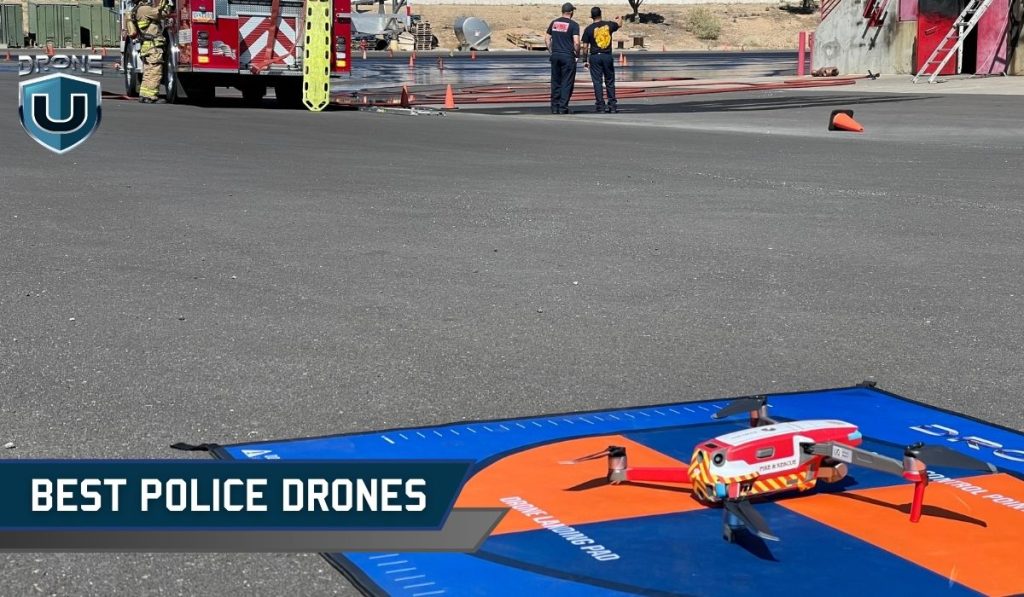
Police drones have become a game-changer for law enforcement, bringing a fresh approach to keeping our communities safe. Gone are the days of relying solely on expensive helicopters for search and rescue missions.
The use of drones by law enforcement has gained popularity in recent years. From enhanced surveillance capabilities to quicker response times during emergencies, drones provide an efficient and cost-effective solution compared to traditional methods.
However, with so many available options, choosing the right police drone can be a bit overwhelming. That’s where this guide comes in handy.
It’s designed to help you navigate through the choices and find the perfect drone that meets your specific needs. We’ll break down the features, benefits, and considerations to keep in mind when making your decision.
First, let’s take a quick look at how drones have transformed the police department’s approach and elevated their effectiveness.
Benefits of Police Drones
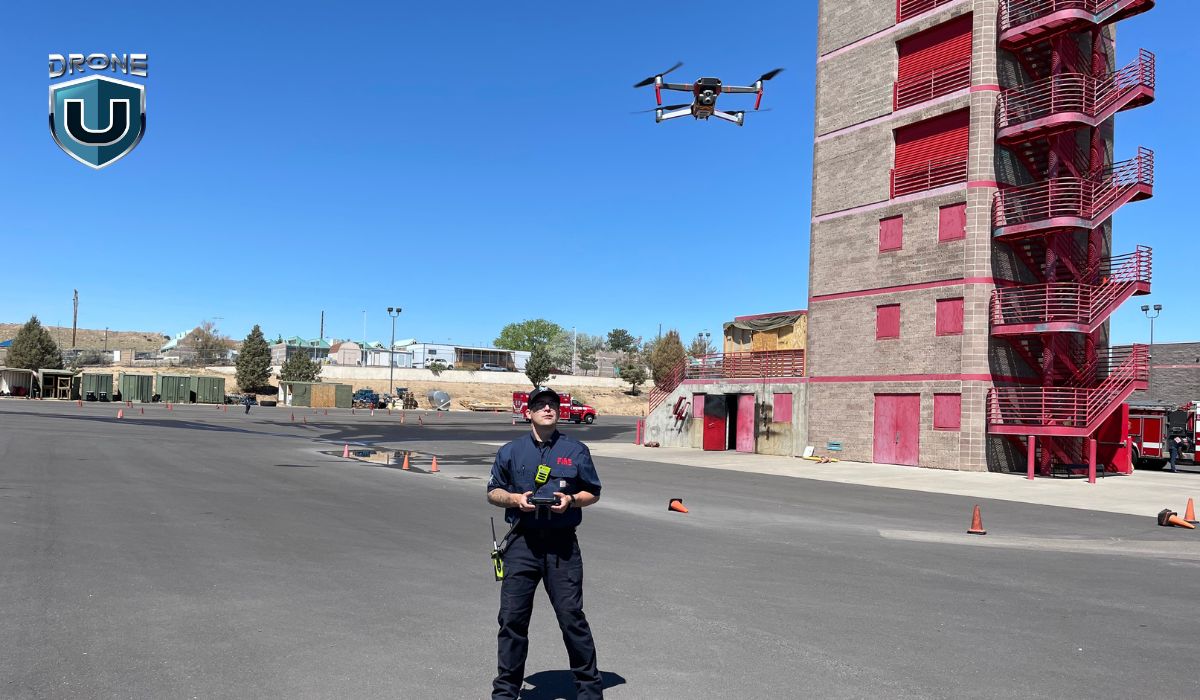
Here are the key benefits of using police drones:
1. Enhanced Surveillance and Monitoring Capabilities
Police drones equipped with high-resolution cameras and thermal imaging provide superior surveillance capabilities. These drones can cover large areas quickly, capturing detailed footage that can be used for monitoring crowds, tracking suspects, and collecting evidence.
2. Quick Deployment in Emergency Situations
Drones can help in providing real-time intelligence to officers on the ground. Whether it’s a natural disaster, a missing person search, or an active shooter scenario, drones can arrive on the scene faster than traditional methods. This quick response time can be crucial in saving lives and mitigating dangers.
3. Cost-Effectiveness
Operating drones is significantly more cost-effective than deploying helicopters or other manned aircraft. Drones require less fuel, maintenance, and personnel, making them an affordable option for continuous aerial support. This cost-effectiveness allows even smaller police departments to benefit from advanced aerial surveillance.
4. Improved Safety for Officers and the Public
Using drones for reconnaissance and surveillance keeps officers out of harm’s way. By providing a clear picture of the situation from a safe distance, drones reduce the need for officers to enter potentially dangerous environments. Additionally, drones can be used to locate and assess threats, minimizing risks to both law enforcement and civilians.
5. Versatility in Various Operations
Police drones are versatile tools that can be used in a wide range of operations:
- Search and Rescue
- Traffic Management
- Accidents, and road conditions
- Crime Scene Analysis
In conclusion, the benefits of police drones are numerous and impactful. These drones are proving to be indispensable tools in modern law enforcement.
Factors to Consider While Choosing Police Drones
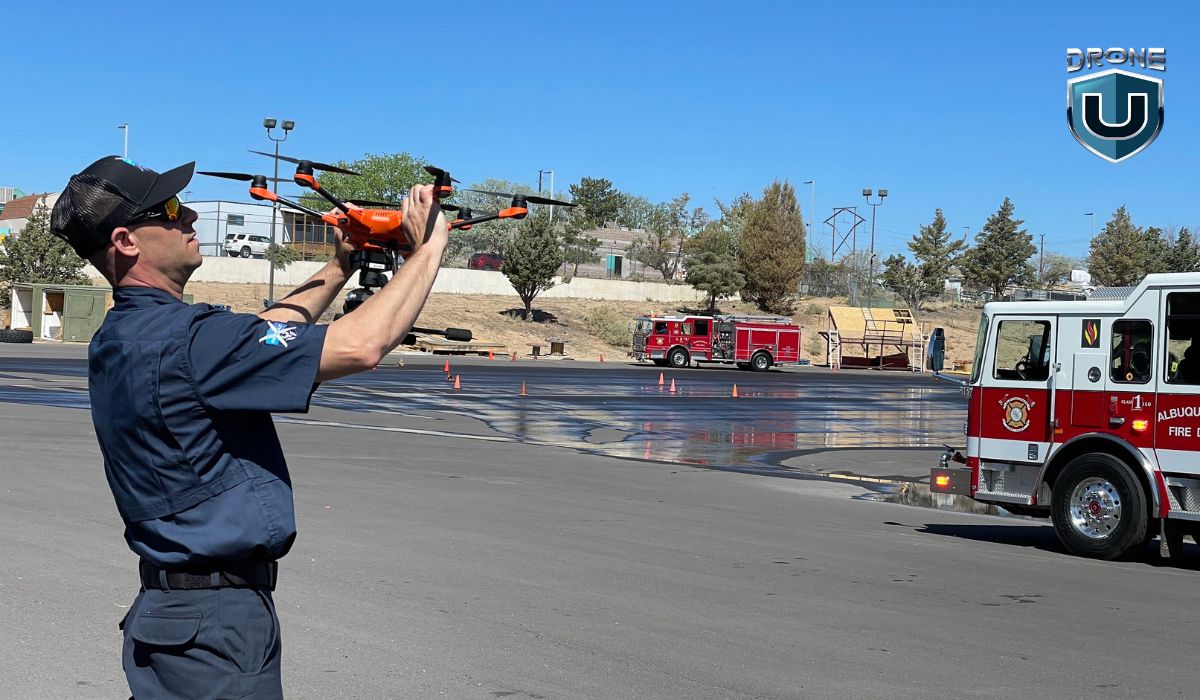
Selecting the right drone for police operations involves understanding the key features that make these devices effective and reliable. Here are the essential features to consider when choosing the best police drones:
1. Camera Quality
High-resolution cameras are crucial for capturing detailed images and videos. Look for drones with 4K resolution or higher, as well as thermal imaging capabilities for night operations and search-and-rescue missions. A drone with a quality camera can provide clear and actionable footage, essential for surveillance and evidence collection.
2. Flight Time and Range
The flight time and range of a drone determine how long and how far it can operate without needing to recharge. Police drones ideally have a flight time of at least 25 minutes and a range that covers several kilometres. Longer flight times and greater range allow for extended operations, reducing the need for frequent battery changes and ensuring continuous coverage during critical missions.
3. Durability and Weather Resistance
Police drones need to be durable and able to withstand various weather conditions. Look for drones with robust construction, and resistance to wind, rain, and extreme temperatures. Weather-resistant drones can operate in diverse environments, ensuring reliability regardless of the conditions.
4. Payload Capacity
The ability to carry additional equipment can enhance a drone’s functionality. Look for drones with sufficient payload capacity to carry items such as loudspeakers, sensors, and other specialized tools. A higher payload capacity allows for versatile use in various missions, from communication with crowds to environmental monitoring.
5. Real-Time Data Transmission
Real-time data transmission is vital for providing instant intelligence to officers on the ground. Drones equipped with live feed capabilities and secure data links can transmit high-quality video and data directly to command centers. This feature ensures timely decision-making and coordination during operations.
6. Autonomous Functions
Advanced autonomous functions, such as automated flight modes, obstacle avoidance, and GPS tracking, enhance a drone’s operational efficiency. Drones with these capabilities can follow predefined paths, avoid collisions, and return to base automatically, reducing the workload on operators and increasing mission success rates.
Top Police Drones in 2024
Here are the best police drones that are making a significant impact in modern policing:
1. DJI Matrice 300 RTK
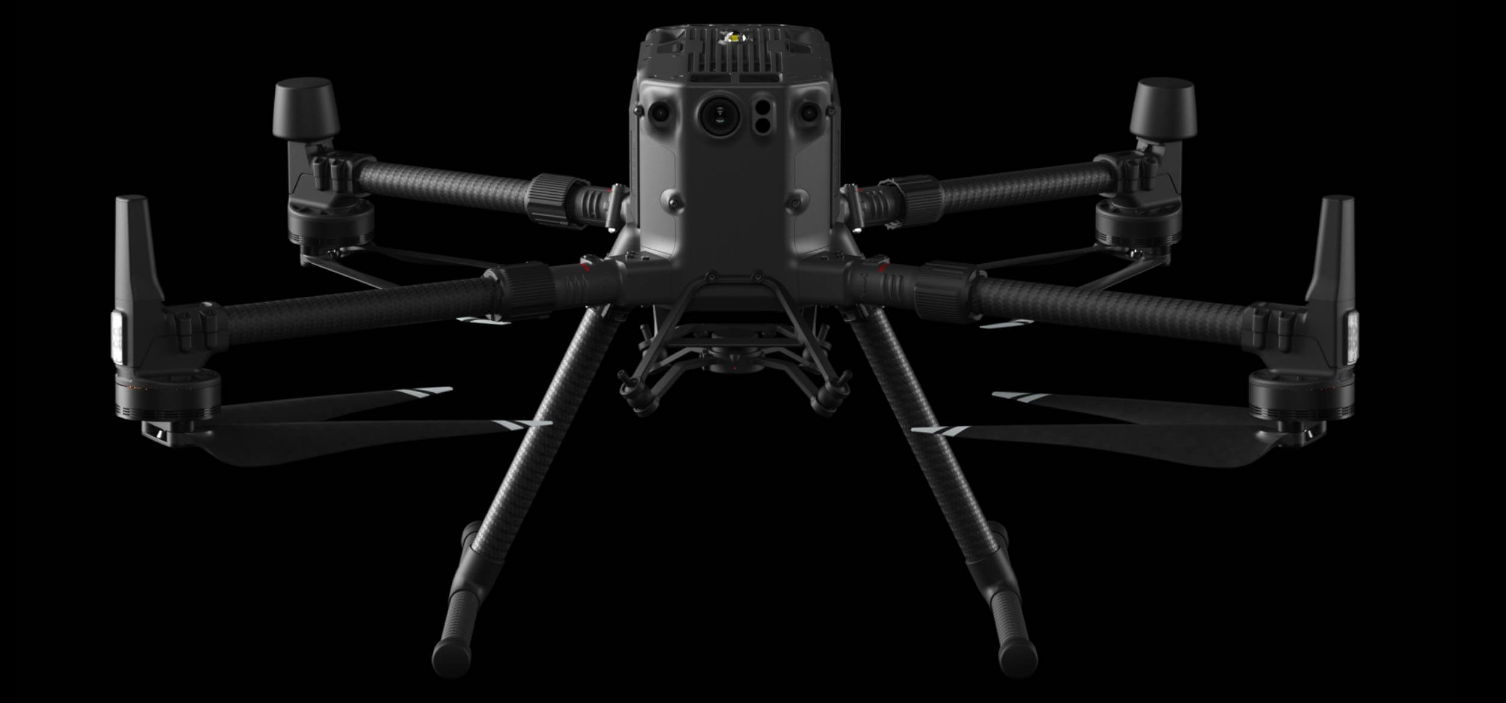
The DJI Matrice 300 RTK is a top-of-the-line commercial drone platform designed for professional applications requiring intelligence, high performance, and reliability.
The Matrice 300 RTK features a rugged design with an IP45 water and dust resistance rating, allowing it to operate in challenging weather conditions including rain, snow, and wind.
The drone is equipped with a Primary Flight Display (PFD) that integrates flight data, navigation information, and obstacle warnings, providing pilots with exceptional situational awareness
Key Features and Specifications:
- High-resolution 4K camera and thermal imaging
- Up to 55 minutes of flight time
- Advanced AI capabilities for autonomous missions
- Obstacle detection and avoidance
- IP45-rated weather resistance
Pros:
- Exceptional camera quality
- Long flight time
- Robust and durable
Cons:
- Higher cost compared to other models
- Requires comprehensive training
Suitable Applications:
- Search and rescue operations
- Crime scene mapping
- Surveillance and reconnaissance
2. Autel Robotics EVO II Dual 640T V2
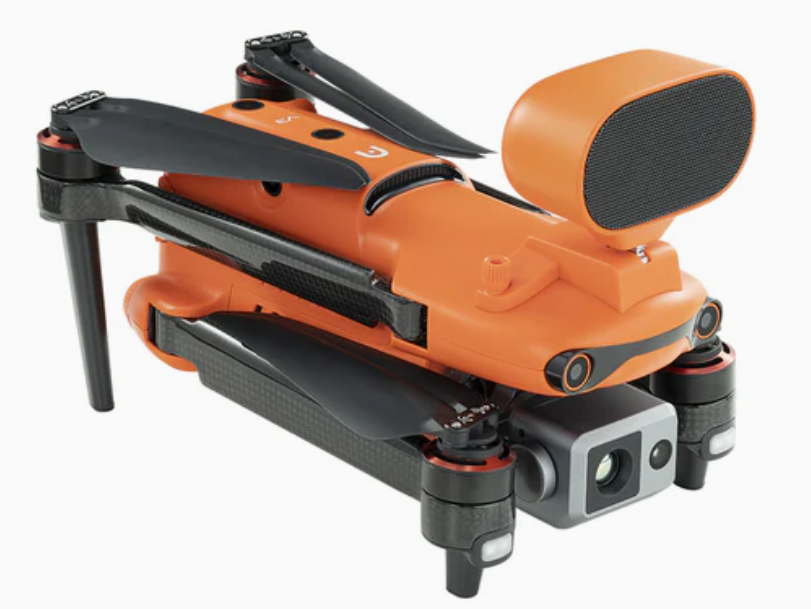
The Autel Robotics EVO II Dual 640T is a high-performance drone designed for professional applications that require both high-resolution visual imaging and thermal imaging capabilities.
Equipped with 19 omnidirectional sensors, the EVO II Dual 640T can autonomously avoid obstacles while flying, allowing for safer navigation in complex environments.
With a maximum flight time of 42 minutes, you can complete inspections or data collection missions without frequent battery changes.
It offers 10 color palettes, a 30Hz refresh rate, and supports Picture-in-Picture mode for viewing both visual and thermal data simultaneously.
Key Features and Specifications:
- 8K video resolution and thermal imaging
- 40 minutes of flight time
- Foldable design for portability
- 360-degree obstacle avoidance
Pros:
- Superior imaging capabilities
- Portable and easy to deploy
- User-friendly interface
Cons:
- Limited payload capacity
- Shorter range compared to some competitors
Suitable Applications:
- Traffic accident analysis
- Patrol and Monitoring
- Emergency response
3. Parrot Anafi USA
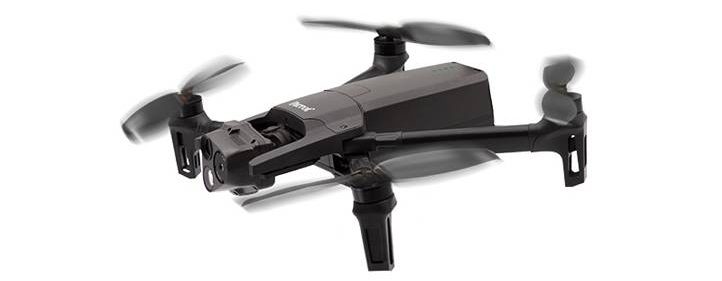
The Parrot Anafi USA is a professional drone manufactured in the United States, specifically designed for law enforcement and public safety applications.
It has an IP53 rating, meaning it’s resistant to dust and water spray.
A major focus of the Anafi USA is data security. It’s manufactured in the USA in compliance with strict cybersecurity regulations. All data stays encrypted on the drone and SD card, and there’s zero data shared by default.
Key Features and Specifications:
- 32x zoom camera with 4K HDR video
- Thermal imaging
- Up to 32 minutes of flight time
- Lightweight and compact design
Pros:
- High-quality zoom and thermal imaging
- Lightweight and portable
- Easy to operate
Cons:
- Shorter flight time
- Limited payload capacity
Suitable Applications:
- Surveillance in urban areas
- Evidence gathering
- Rapid deployment scenarios
4. Skydio X2
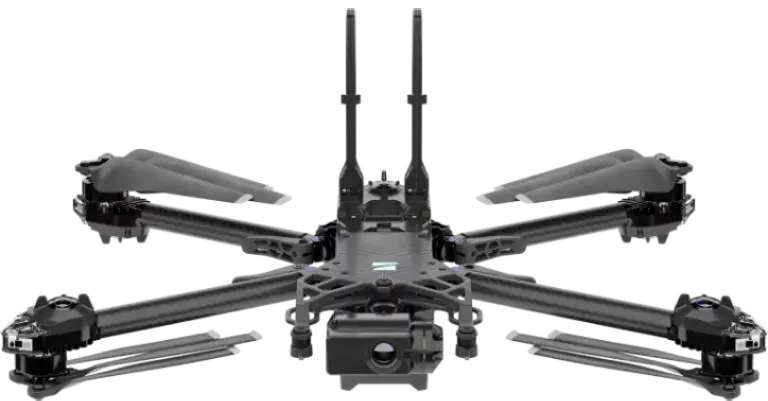
Skydio X2 is all about automated flight. Six 4K navigation cameras combined with onboard AI powered by an NVIDIA TX2 chip allow it to avoid obstacles in all directions and navigate complex environments without needing constant pilot input.
With features like GPS flight and strobe lighting, the X2 is suitable for flying even at night.
The X2 is manufactured in the US and complies with NDAA regulations for secure operations.
Key Features and Specifications:
- 4K60 HDR camera
- Up to 35 minutes of flight time
- Autonomous navigation with 360-degree obstacle avoidance
- Thermal camera for night operations
Pros:
- Advanced autonomous functions
- Excellent obstacle avoidance
- Durable and weather-resistant
Cons:
- Limited payload options
- Higher price point
Suitable Applications:
- Tactical operations
- Perimeter security
- Nighttime surveillance
5. FLIR SkyRanger R70
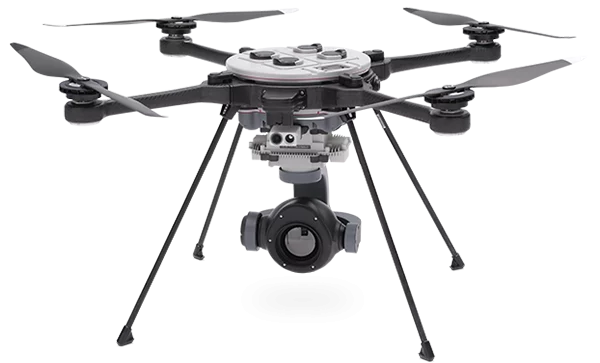
The SkyRanger R70 is built tough, with a carbon fiber and magnesium airframe that can withstand harsh weather conditions. It meets IP-54 and MIL-810G environmental standards. The SkyRanger R70 can perform real-time object detection and classification right on board, without needing a constant connection to a server.
FLIR SkyRanger R70 is a powerful and versatile drone that can be used for a variety of applications, including defense, security, and inspection missions.
Key Features and Specifications:
- High-definition EO/IR gimbal sensor
- 50 minutes of flight time
- Weather-resistant and rugged design
- Advanced navigation and stability features
Pros:
- Superior thermal imaging
- Long flight time
- Robust and reliable in harsh conditions
Cons:
- Expensive
- Requires specialized training
Suitable Applications:
- Search and rescue in extreme environments
- Long-duration surveillance missions
- Tactical reconnaissance
6. Brinc Lemur 2
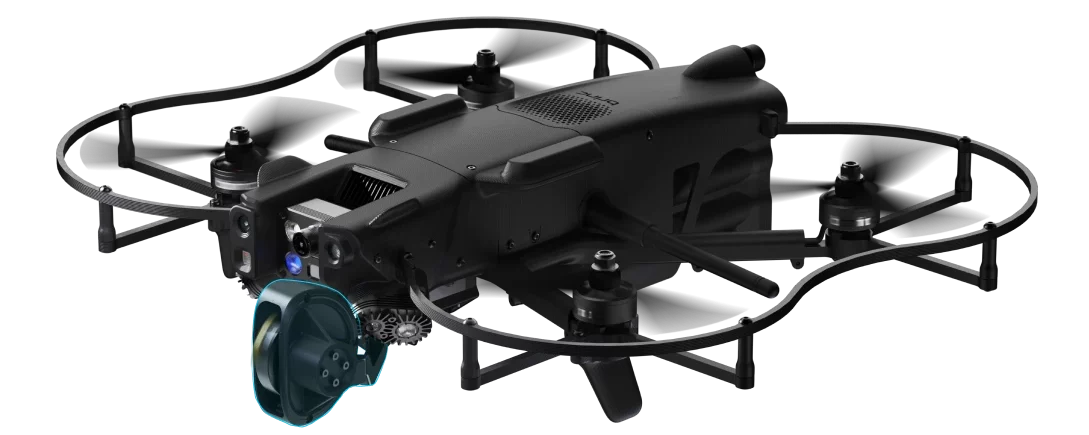
The Brinc Lemur 2 is a specialized drone designed specifically for law enforcement and public safety applications.
The Brinc Lemur 2 is built to withstand harsh conditions and challenging environments, making it ideal for tactical operations. The Lemur 2 is highly effective in SWAT and tactical operations, providing real-time intelligence and situational awareness. Its ability to navigate indoor environments allows officers to scout and assess threats without exposing themselves to danger.
Key Features and Specifications:
- Lemur 2 is built to operate in harsh conditions
- Includes thermal imaging sensors
- Has advanced obstacle avoidance
- Can endure crashes and collisions
- Remains operational in high-risk environments
Pros:
- Can operate in heavy rain, dust, and challenging environments
- Integrated two-way communication system
- Can navigate tight and complex spaces autonomously
Cons:
- Expensive than others
- Heavier and larger drone
- Require specialized training for effective operation
Suitable Applications:
- Highly effective in tactical operations, such as SWAT interventions and high-risk arrests
- Ideal for search and rescue mission
- Two-way communication system enables officers to communicate when required
By considering the specific needs of their operations, you can choose the most suitable drones to enhance their capabilities, improve safety, and ensure more effective law enforcement efforts.
Comparison of Law Enforcement Drones
| Feature | DJI Matrice 300 RTK | Autel Robotics EVO II Dual 640T V2 | Parrot Anafi USA | Skydio X2 | FLIR SkyRanger R70 |
| Primary Use | Surveying, Inspection | Search & Rescue, Inspection | Security, Inspection | Mapping (autonomous), Inspection | Mapping (large areas), Defense |
| Payload | Highly customizable (photogrammetry, LiDAR) | Dual camera (visual & thermal) | Triple camera (visual, zoom, thermal) | Dual camera (visual & thermal) | Various payloads (cameras, LiDAR) |
| Flight Time | Up to 55 minutes | Up to 42 minutes | Up to 32 minutes | Up to 35 minutes | Up to 50 minutes |
| Image Quality | High-resolution | High-resolution visual, thermal | High-resolution visual, zoom, thermal | High-resolution visual, thermal | High-resolution (depending on payload) |
| Durability | Excellent (IP45 water/dust resistant) | Good | Good (IP53 dust/water spray resistant) | Good | Excellent (IP-55) |
| Range | Up to 15km | Up to 9km | Up to 4km (FCC compliance required) | Up to 6km (5GHz) or 10km (1.8GHz) | Up to 8km (depending on payload) |
| Autonomy | Limited | Some intelligent flight modes | Limited | Extensive autonomous flight features | Limited |
| Security | Standard | Standard | Focuses on US-based manufacturing & data security | Standard | Standard |
Future Trends in Police Drones
The future of police drones is poised to bring even more advanced capabilities and innovative applications to law enforcement agencies. Here are some key trends to watch for in the coming years:
1. Integration of Artificial Intelligence (AI) and Machine Learning
AI and machine learning are set to revolutionize drone technology, enhancing their ability to analyze data in real-time. Drones will be able to identify and track suspects, recognize faces, and predict potential criminal activity based on patterns detected during surveillance. These capabilities will significantly improve the efficiency and effectiveness of police operations?.
2. Enhanced Autonomous Functions
Future drones will feature more advanced autonomous functions, including improved obstacle avoidance, automated flight paths, and self-charging capabilities. These advancements will allow drones to operate with minimal human intervention, reducing officers’ workload and increasing drone missions’ reliability.
3. Improved Sensors and Imaging Technology
Advances in sensor technology will enhance the capabilities of police drones. Expect higher-resolution cameras, more sensitive thermal imaging, and multispectral sensors that can provide more detailed and varied data. These improvements will make drones even more valuable for tasks such as crime scene analysis, search and rescue, and environmental monitoring?.
4. Extended Flight Times and Battery Technology
Ongoing research and development in battery technology will lead to longer flight times and quicker recharging. This will enable drones to cover larger areas and stay airborne for extended periods, which is crucial for long-duration missions such as surveillance and search operations?.
5. Integration with Other Technologies
Police drones will increasingly be integrated with other technologies such as body-worn cameras, vehicle systems, and command centers. This seamless integration will provide a comprehensive view of operations, enhancing coordination and information sharing among officers. Drones will also be connected to Internet of Things (IoT) networks, allowing them to gather and transmit data more efficiently.
6. Use in Community Policing and Public Engagement
Drones will play a more significant role in community policing, helping to build trust between law enforcement and the public. They can be used for non-invasive surveillance, public safety announcements, and community events. This positive engagement can improve public perception and cooperation with police efforts.
The future of police drones is bright, with numerous technological advancements and new applications on the horizon. These innovations will enhance the capabilities of police drones, making them indispensable tools for ensuring public safety and effective law enforcement.
Summary and Our Recommendations
Police drones offer enhanced surveillance capabilities, quick deployment in emergencies, cost-effectiveness, improved safety for officers and the public, and versatility in various operations.
When selecting a drone, key features to consider include camera quality, flight time and range, durability, payload capacity, real-time data transmission, and autonomous functions.
Here is a quick rundown of how you can choose the best police drone based on your specific needs:
If you prioritize automated flight capabilities for pre-programmed missions, the Skydio X2 is a strong contender.
For night-time security and infrastructure inspections where heat signature detection is valuable, Autel Robotics EVO II Dual 640T V2 would be a decent choice.
If you want a relatively small, foldable, and user-friendly interface, Parrot Anafi USA is a great choice.
For long-range mapping and surveying missions, the Brinc Lemur 2 seems to be a solid option. While FLIR SkyRanger R70 offers high payload capacity for photogrammetry or LiDAR systems, and RTK compatibility.
That being said…
Investing in the right police drone can significantly enhance law enforcement capabilities, improve public safety, and optimize resource allocation.
Ultimately, you need to carefully assess their requirements and budget to select the drone that best aligns with their operational needs.








Add Your Comment